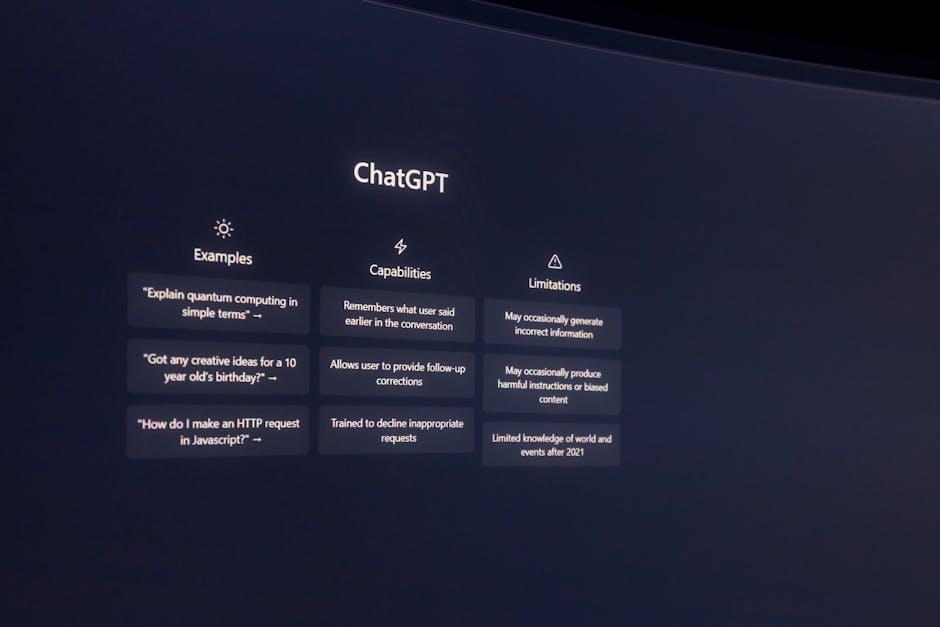In the sprawling digital landscape of social media, where billions of voices converge and countless stories unfold every second, maintaining a safe and respectful environment has become both a necessity and a challenge. Enter AI content moderation: an invisible yet powerful force working tirelessly behind the scenes to sift through mountains of posts, images, and videos. This technological guardian promises to balance freedom of expression with the need to curb harmful content, navigating complexities that often outpace human oversight. As algorithms evolve and ethical questions arise, the role of AI in shaping our online conversations grows ever more intricate-and essential.
The evolving landscape of AI content moderation

Artificial intelligence has dramatically reshaped how social media platforms approach the monumental task of content moderation. Early methods relied heavily on manual reviews, which were time-consuming and inconsistent. Today, AI systems leverage advanced natural language processing, computer vision, and deep learning to identify harmful content, misinformation, and spam in real time. These technologies can analyze billions of posts, comments, images, and videos daily, allowing platforms to flag potential violations faster than ever before. However, this rapid evolution also demands continuous adaptation, as AI models must be trained on diverse and evolving datasets to effectively understand context, slang, and cultural nuances across global user bases.
Key challenges that shape this new frontier include:
- The delicate balance between automation and human oversight to avoid errors.
- Ensuring fairness by preventing unintended biases embedded in algorithms.
- Addressing privacy concerns while scanning vast amounts of user-generated data.
- Adapting swiftly to emerging trends in harmful behavior and language.
| Aspect | Traditional Moderation | AI-Driven Moderation |
|---|---|---|
| Speed | Hours to days | Seconds to minutes |
| Scalability | Limited | Massive |
| Consistency | Variable | High |
| Context understanding | High | Improving |
Balancing accuracy and fairness in automated decisions

Striking a balance between accuracy and fairness is a pivotal challenge for AI-powered content moderation. While accuracy ensures that harmful or inappropriate content is identified and addressed promptly, an overemphasis on precision can inadvertently lead to censorship or bias against particular groups. This delicate equilibrium demands continuous calibration of algorithms to not only detect violations but also avoid unfairly penalizing legitimate expression. To achieve this, developers must integrate diverse datasets reflecting a wide range of cultural nuances, languages, and contexts.
Key factors in maintaining this balance include:
- Transparent criteria that clarify what constitutes unacceptable content.
- Regular algorithm audits to identify and mitigate biases that may arise in automated decisions.
- User feedback loops to refine moderation outcomes and correct mistakes.
- Human-in-the-loop systems that combine AI scalability with human judgment for complex cases.
| Aspect | Focus | Challenge |
|---|---|---|
| Accuracy | Correctly flag harmful content | False positives |
| Fairness | Equal treatment for all users | Algorithmic bias |
| Transparency | Clear moderation rules | User trust |
Addressing algorithmic biases for inclusive moderation

Ensuring fairness in AI moderation systems is a delicate balancing act that requires ongoing vigilance and innovation. Algorithms trained on historical data risk perpetuating existing societal biases, often disproportionately impacting marginalized communities. To build truly inclusive systems, developers must prioritize transparency in data selection and model training processes. This involves actively identifying and mitigating bias through diverse training datasets, incorporating feedback loops from affected user groups, and deploying fairness-aware machine learning techniques. When content moderation is inclusive, it empowers all voices rather than silencing some unintentionally.
Key strategies for mitigating algorithmic bias include:
- Continuous auditing of AI decisions using fairness metrics
- Engagement with diverse stakeholder communities for feedback
- Utilizing synthetic data to balance underrepresented voices
- Implementing layered moderation combining AI and human oversight
| Bias Type | Impact | Mitigation Technique |
|---|---|---|
| Racial Bias | Unequal content suppression | Balanced datasets & algorithmic fairness constraints |
| Gender Bias | Misclassification of speech tone | Targeted data augmentation |
| Cultural Bias | Misinterpretation of context | Localized moderation models |
Best practices for implementing transparent AI systems

Ensuring transparency in AI-driven moderation systems starts with clear communication about how content decisions are made. Social media platforms should prioritize explaining the criteria and algorithms behind content filtering in accessible language. This includes releasing detailed documentation, disclosing the types of data inputs used, and offering insights into the model’s decision-making framework. Additionally, providing users with real-time feedback on moderation actions-such as why certain posts were flagged or removed-empowers them to understand and potentially contest these decisions. Incorporating user-friendly dashboards or notifications enhances trust and reduces confusion regarding the automated processes at play.
Another cornerstone is engaging in continuous monitoring and human oversight to prevent biases and errors in moderation. Platforms can implement periodic audits of AI outputs through diverse review teams that reflect a broad spectrum of cultures and perspectives. This approach not only helps identify unintended discrimination but also fosters adaptability by integrating human judgment in ambiguous cases. Below is a simplified overview of key components that contribute to transparent moderation systems:
| Component | Description | Benefit |
|---|---|---|
| Algorithm Disclosure | Sharing filtering criteria and rules | Builds user trust |
| User Feedback | Real-time moderation explanations | Improves understanding |
| Human Oversight | Regular audits and reviews | Reduces bias and errors |
| Data Transparency | Clear info on training data sources | Enhances accountability |
- Open communication: Maintain ongoing dialogues with users about AI policies.
- Inclusive design: Embed diverse cultural insights into AI development.
- Adaptive feedback loops: Continuously refine models based on user input and audit findings.
To Conclude
As the digital landscape continues to evolve, AI content moderation stands at the crossroads of innovation and responsibility. It offers a powerful lens through which social media platforms can navigate the complexities of online expression, balancing the scales between safety and freedom. While no system is flawless, the ongoing refinement of AI tools promises a future where communities thrive in spaces that are both vibrant and respectful. In this intricate dance between technology and humanity, content moderation is not just about filtering information-it’s about shaping the very culture of our shared digital world.











